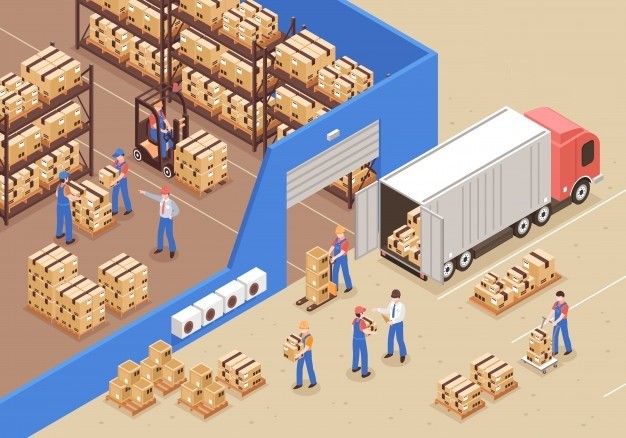Limestone, a sedimentary rock formed over millennia from the accumulation of marine organisms, has been a favored material in architecture and landscaping for centuries. Its enduring beauty, versatility, and ability to evoke a sense of timeless elegance make it a perfect choice for creating captivating outdoor spaces. This article explores the allure of limestone in the landscape, guiding you through its various applications, the selection process, and the crucial role of a skilled Nashville limestone fabricator in bringing your design vision to life. The Allure of Limestone Limestone possesses a unique combination of qualities that make it a sought-after material for landscaping projects. Its inherent beauty stems from its natural variations in color, texture, and veining. From creamy whites and warm beiges to subtle grays and earthy browns, limestone offers a palette of hues that complement any landscape design. Its versatility extends beyond color, with a range of finishes, from smooth and honed to textured and rustic, allowing it to seamlessly integrate into both traditional and contemporary settings. Limestone is renowned for its durability and ability to withstand the elements. Resistant to weathering, freeze-thaw cycles, and fading, it can endure harsh climates and heavy foot traffic, making it an ideal choice for patios, walkways, and pool surrounds. A well-maintained limestone landscape can last for generations, adding enduring value and character to your property. Limestone has a unique ability to evoke a sense of history, timelessness, and connection to the natural world. Its organic textures and subtle variations in color create a sense of warmth and authenticity, transforming outdoor spaces into inviting retreats that blend seamlessly with their surroundings. Applications of Limestone in the Landscape Limestone’s versatility lends itself to a wide range of applications in landscaping, allowing you to create stunning and functional outdoor spaces: Patios and Walkways. Limestone slabs near me are a popular choice for patios and walkways, providing a durable and elegant surface for outdoor living and entertaining. The slabs can be laid in various patterns, from classic running bond to intricate herringbone, to create visual interest and define different areas within the landscape. Pool Coping and Surrounds. Limestone’s slip-resistant properties and ability to stay cool in the sun make it an excellent choice for pool coping and surrounds. Retaining Walls and Steps. Limestone’s strength and durability make it suitable for constructing retaining walls and steps, adding structural integrity and visual appeal to sloped landscapes. Its natural textures and colors blend harmoniously with the surrounding environment, creating a sense of natural flow and integration. Water Features and Garden Accents. Limestone can be used to create stunning water features, such as fountains, waterfalls, and ponds, adding a soothing and dynamic element to the landscape. Its natural beauty enhances the reflective qualities of water, creating a tranquil and captivating focal point. Sourcing Limestone for Your Landscape Finding the perfect limestone for your landscaping project involves exploring various options and considering factors like quality, price, and availability. A landscape stone supplier near me is a great resource for sourcing limestone. These suppliers offer a wide variety of limestone products, including slabs, pavers, and boulders for sale. You can see the stones firsthand, compare different types, and get expert advice on selecting the best materials for your project. For custom limestone features, such as countertops, fireplace surrounds, or carved elements, you’ll need the expertise of a limestone fabricator. These skilled artisans can cut, shape, and finish limestone to your specifications, creating bespoke pieces that add a unique touch to your landscape. Designing with Limestone Creating a cohesive and captivating landscape with limestone involves thoughtful planning and consideration of various design elements. Choose limestone that complements the style and color palette of your home’s architecture. For traditional homes, consider classic limestone varieties with warm hues and subtle veining. For modern homes, opt for sleek and contemporary limestone with clean lines and minimalist aesthetics. You can also use limestone to create a sense of flow and balance within your landscape. Guide visitors through the space with limestone pathways, define different areas with limestone patios or retaining walls, and create focal points with limestone water features or sculptures. Integrate limestone seamlessly with the natural elements of your landscape. Plant native trees and shrubs around limestone features, incorporate boulders for sale into your design, and use soft lighting to highlight the beauty of the stone in the evening. Installation and Maintenance Proper installation and ongoing maintenance are essential for ensuring the longevity and beauty of your limestone landscape. While some DIY enthusiasts may choose to tackle smaller limestone projects themselves, larger or more complex installations often require the expertise of a qualified landscape contractor. Look for a contractor with experience in working with limestone and a strong reputation for quality craftsmanship. During the installation ensure proper drainage to prevent water damage and prolong the life of your limestone landscape. The base should be properly prepared so that water can flow away from the stonework. Regular cleaning and sealing will help protect your limestone from staining and weathering. Use a mild detergent and water to clean the stone as needed, and apply a sealant specifically designed for limestone to protect it from moisture and dirt. Conclusion Limestone’s enduring beauty, versatility, and ability to evoke a sense of timeless elegance make it an ideal choice for creating captivating outdoor spaces. Whether you envision a rustic flagstone pathway meandering through a lush garden, a sophisticated limestone patio perfect for al fresco dining, or a custom water feature crafted by a skilled limestone fabricator that adds a touch of serenity to your backyard oasis, limestone offers endless possibilities for transforming your landscape. With careful planning, meticulous installation, and ongoing maintenance, your limestone landscape will become a sanctuary of natural beauty and enduring value, a testament to your unique style and appreciation for the timeless elegance of natural stone. It will be a space where you can connect with nature, entertain friends and family, or simply unwind and enjoy the serenity of your surroundings for generations to come. So,














